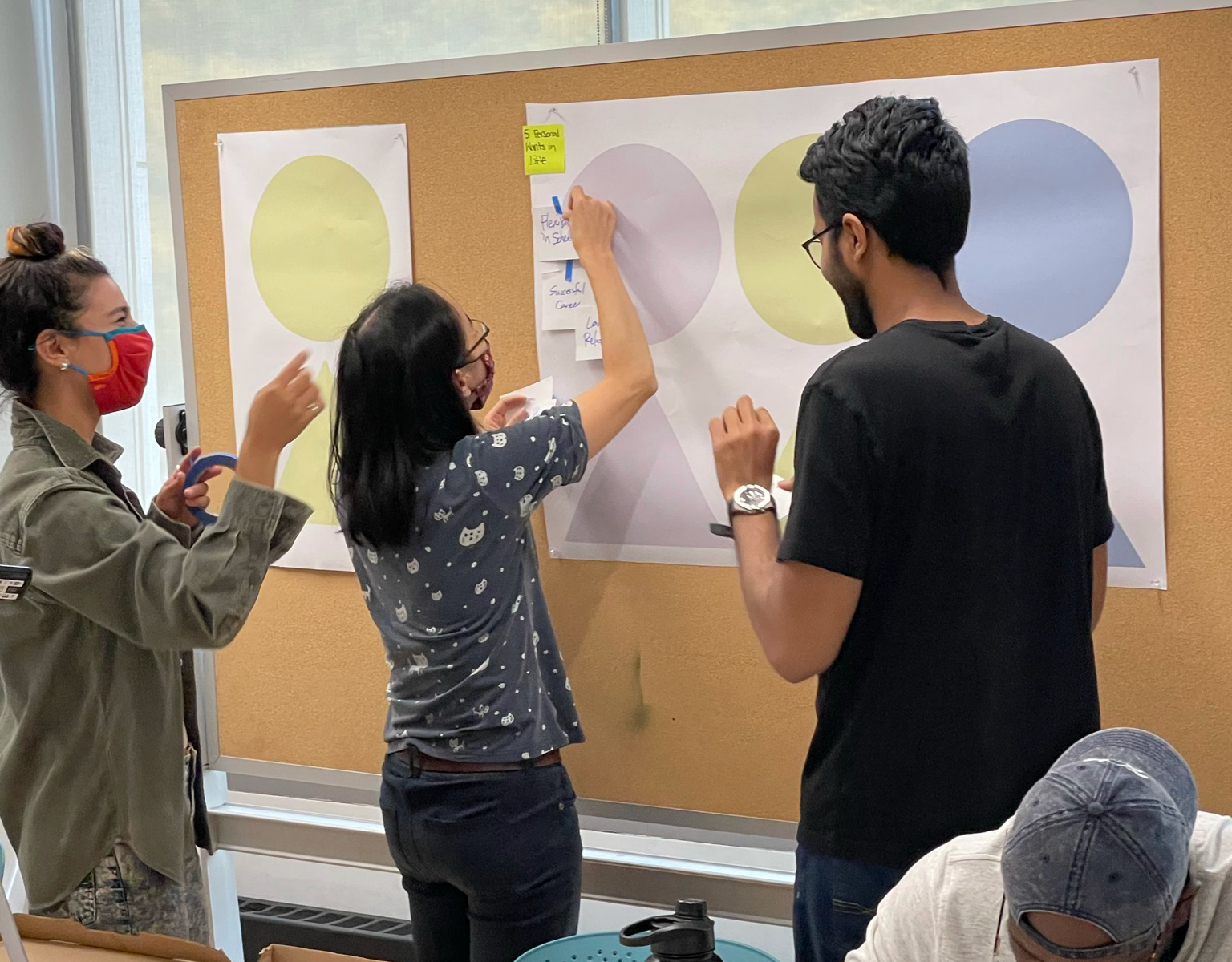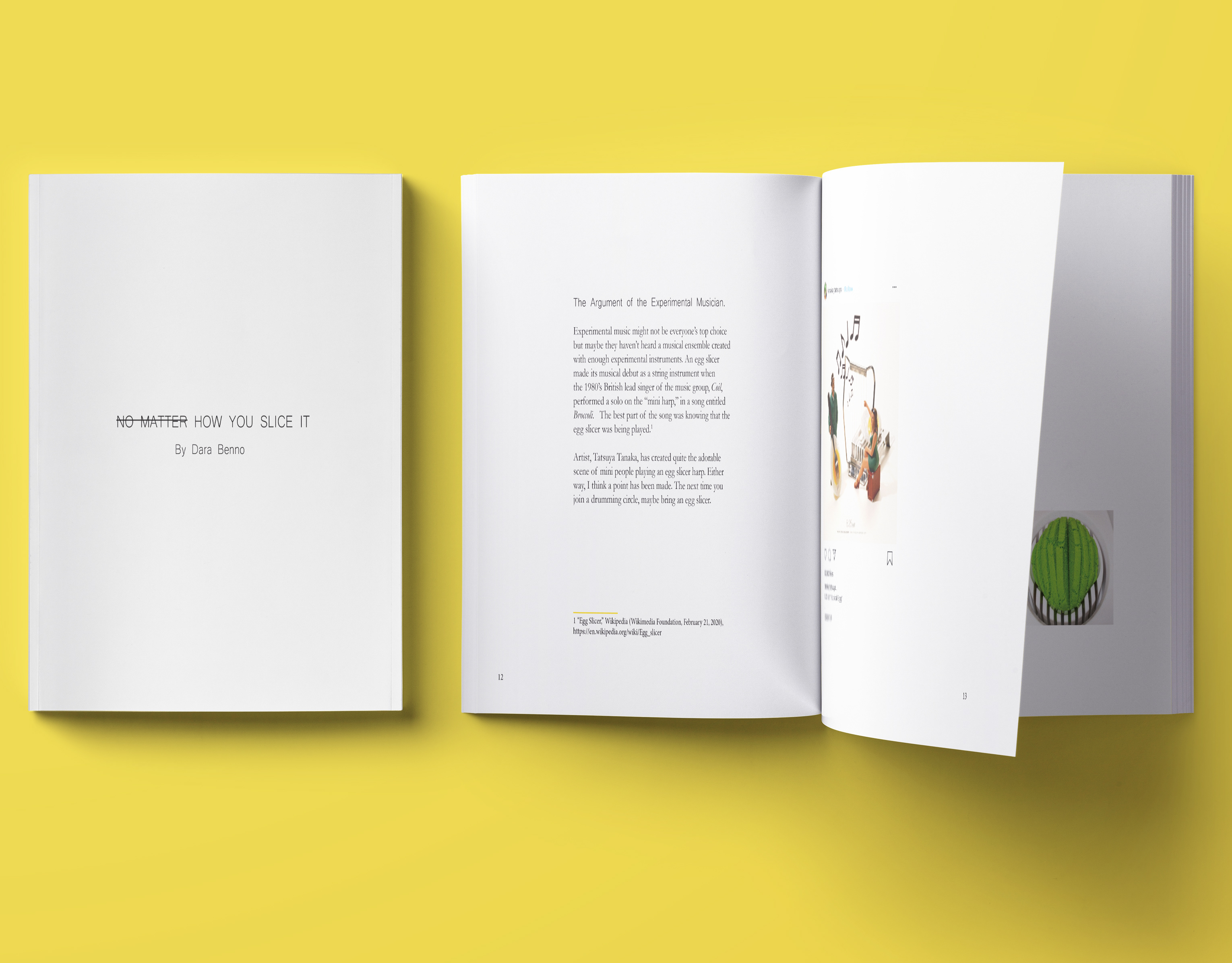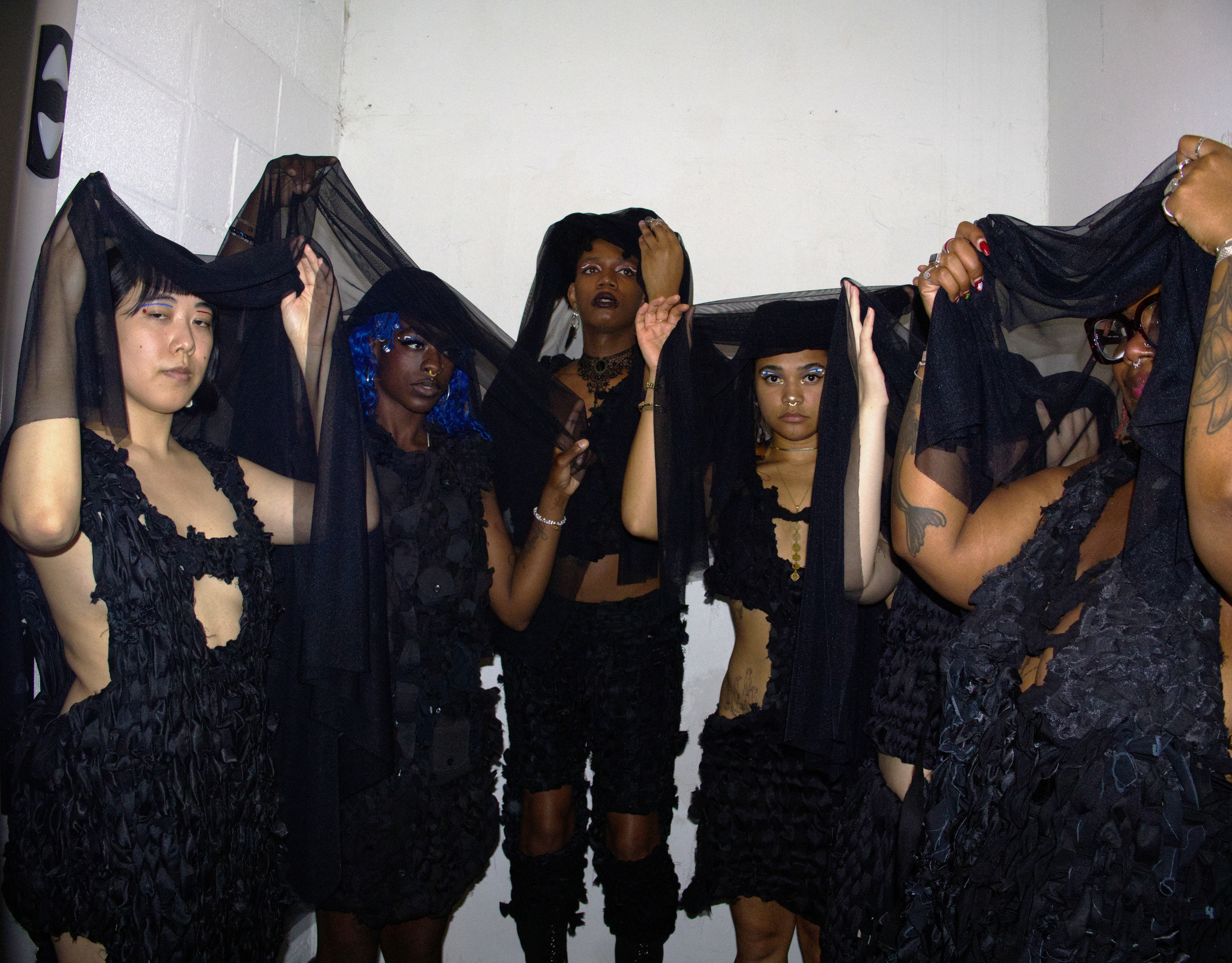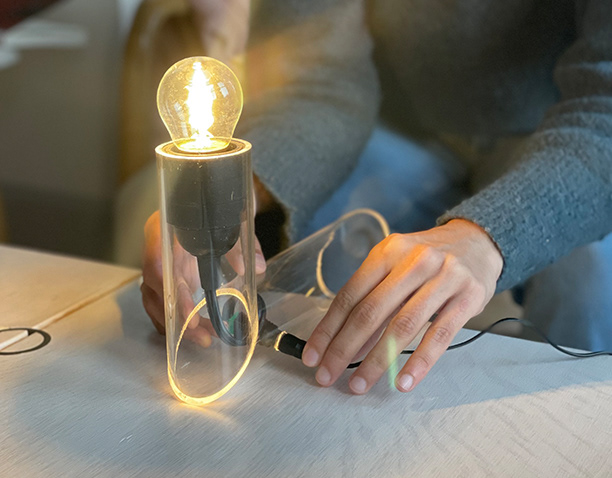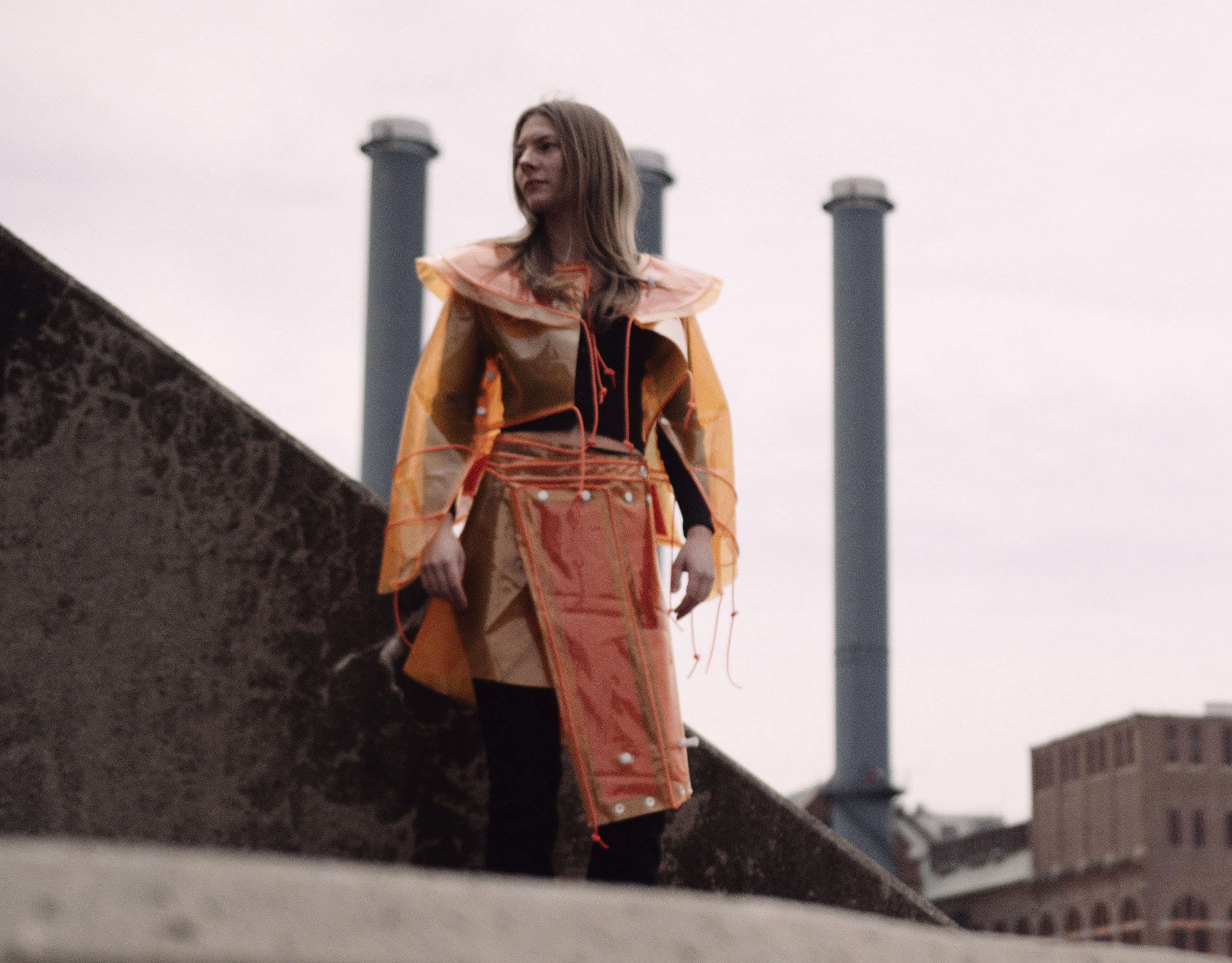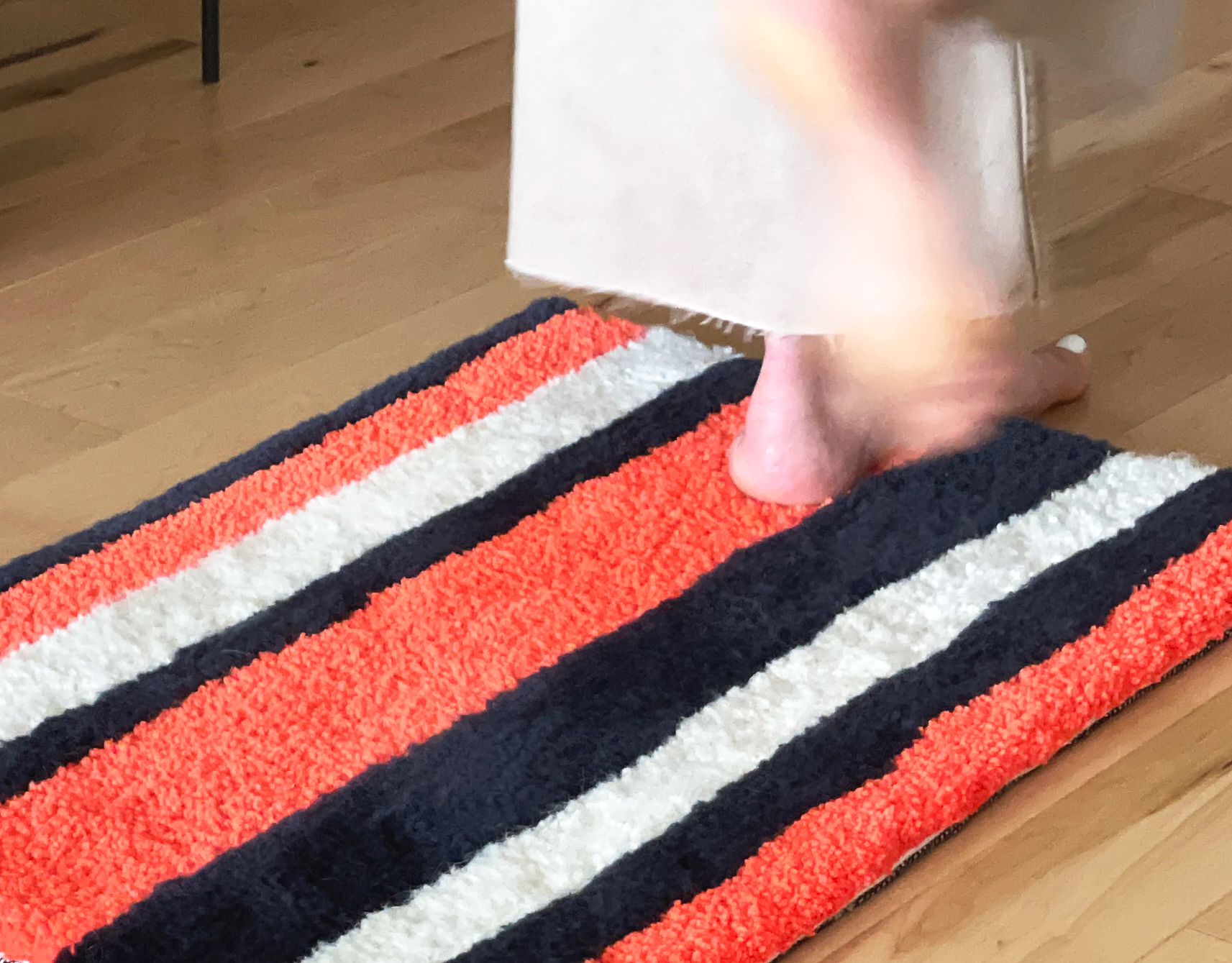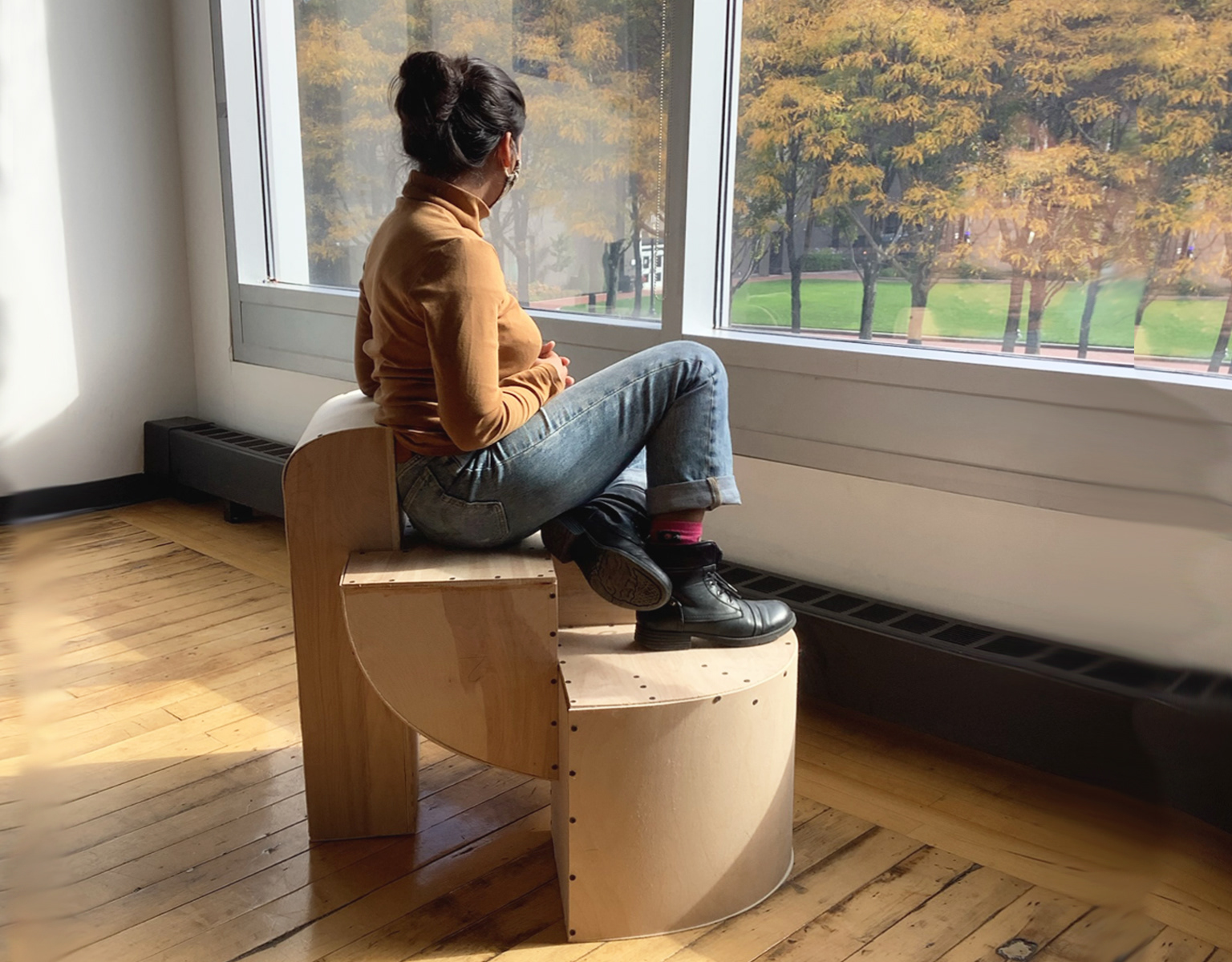How can the objects we interact with encourage actions toward impactful change?
Melting Point rug rendering in the home space.
Background image provided by outdoorrugs.com.
By introducing a curated interaction of intentional obstacles into daily life, our habits and routines are challenged. These obstacles create moments of thoughtful pause and reflection, opening up the opportunity to alter behavior patterns through conscious decision-making power. By integrating a designed friction into daily life through a transformation of mundane objects, we can create a system of reminders, helping to heighten our awareness of what we already know and acting as a form of commitment to intended action.
Melting Point is a rug designed to ground the user to the reality of the climate changing world around them. Based on a NASA satellite image portraying the sea ice extent captured on November 1st, 2021, the design reminds anyone who interacts with the rug of the climate crisis that exists right under our noses, quite literally exhibiting patterns of how the world is changing around us. With a red outline signifying the median ice edge between 1981 and 2010, depicting the melting ice caps and helping to visualize the effects of our everyday actions, the rug acts as a reminder of reality even when the comforts of home can be distracting. Through continued exposure, the design aims to not only encourage ongoing reflection and discussion surrounding the subject of rapid climate change but also aims to increase feelings of empowerment to start taking action in everyday choices.
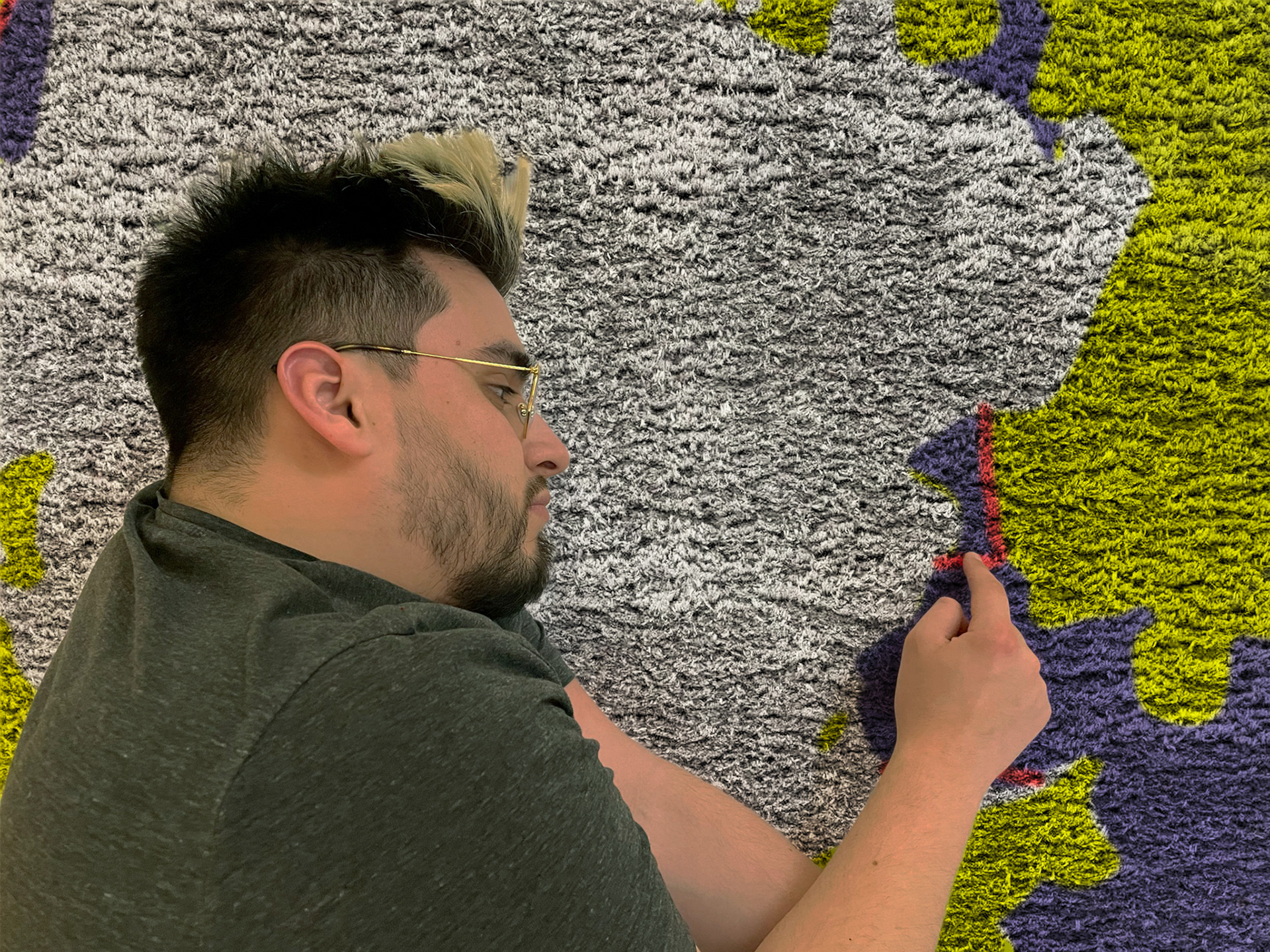
Interaction renderings
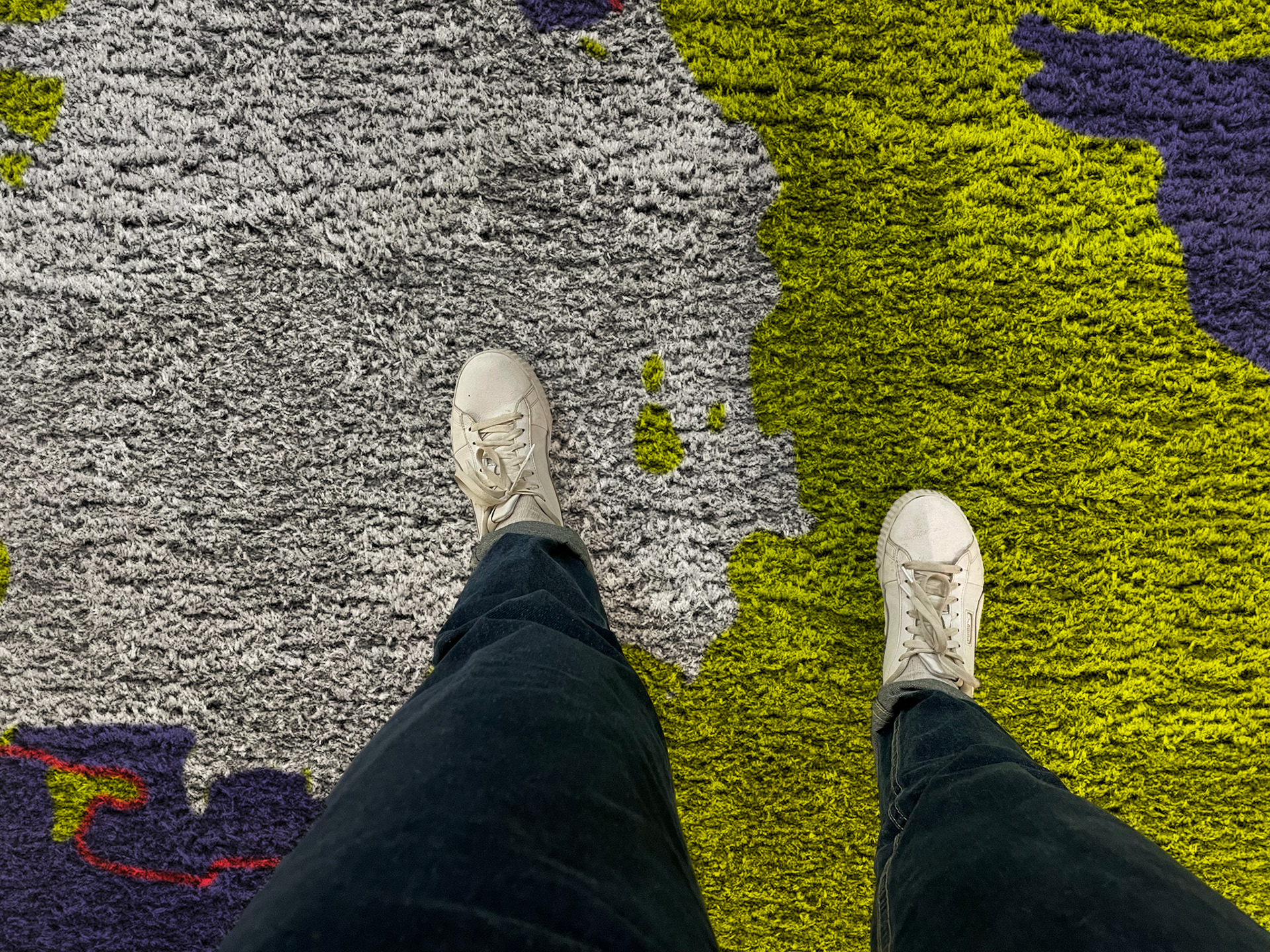
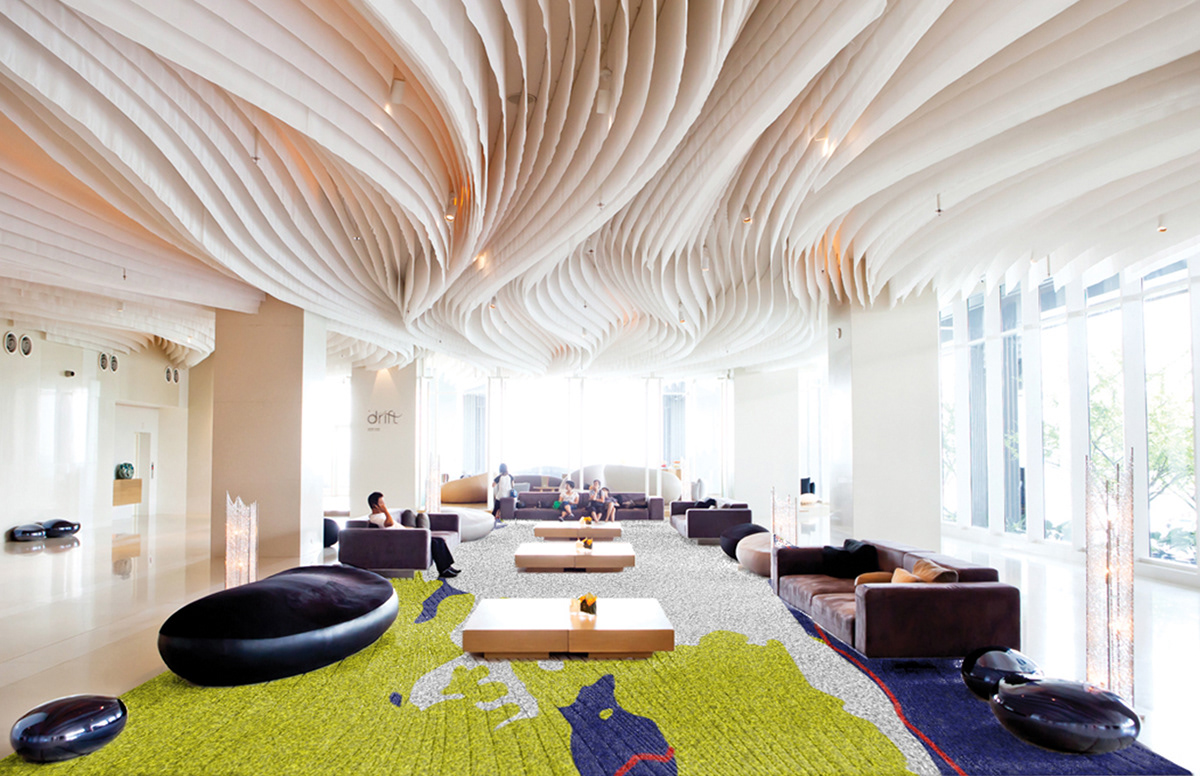
Rendering of Melting Point rug in a public space. Background image provided by architectureartdesigns.com.
The rug design is based on a satellite image from Nasa showing the sea ice extent from Nov 1, 2021. The outline signifies the median ice edge between 1981 and 2010. Nasa imagery provided by the the National Snow & Ice Data Center (NSIDC).
Challenge
If global warming is common knowledge and we are regularly informed of increasing, widespread natural disaster, why are we going about daily life as if everything is normal? If emergency isn't in our own backyard, are we too distracted by the comforts of everyday life to pay attention?
Research + Insights
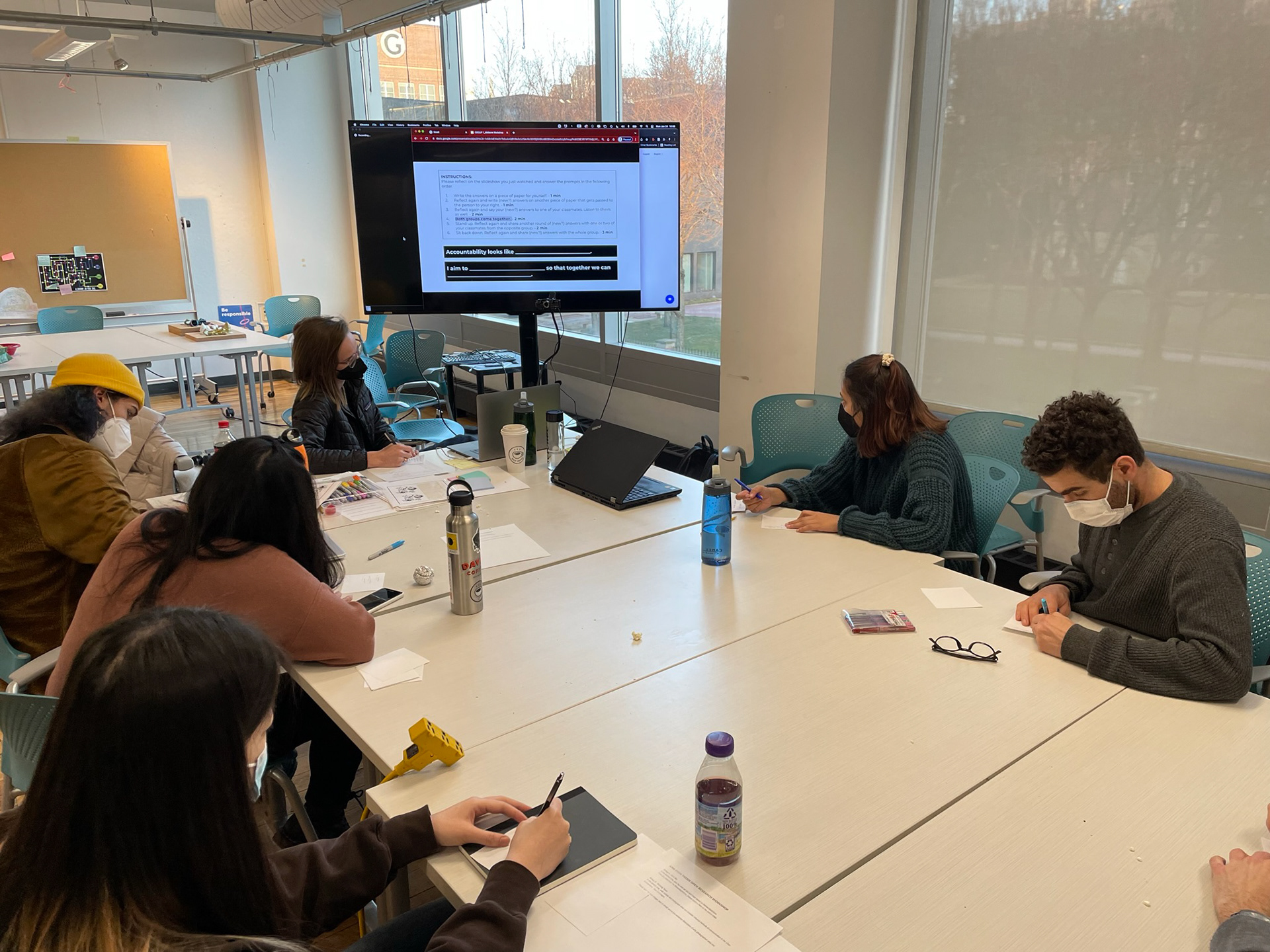
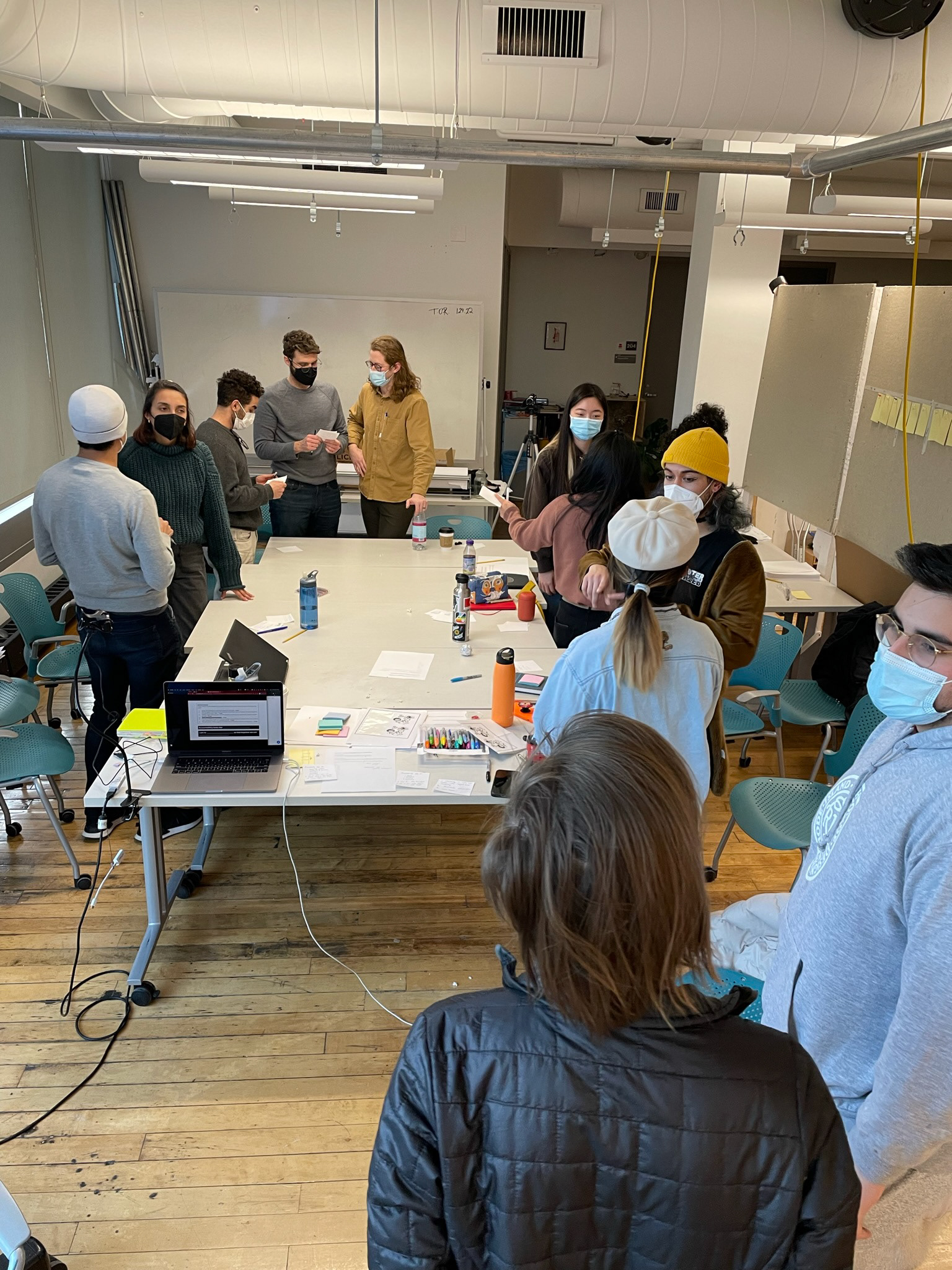

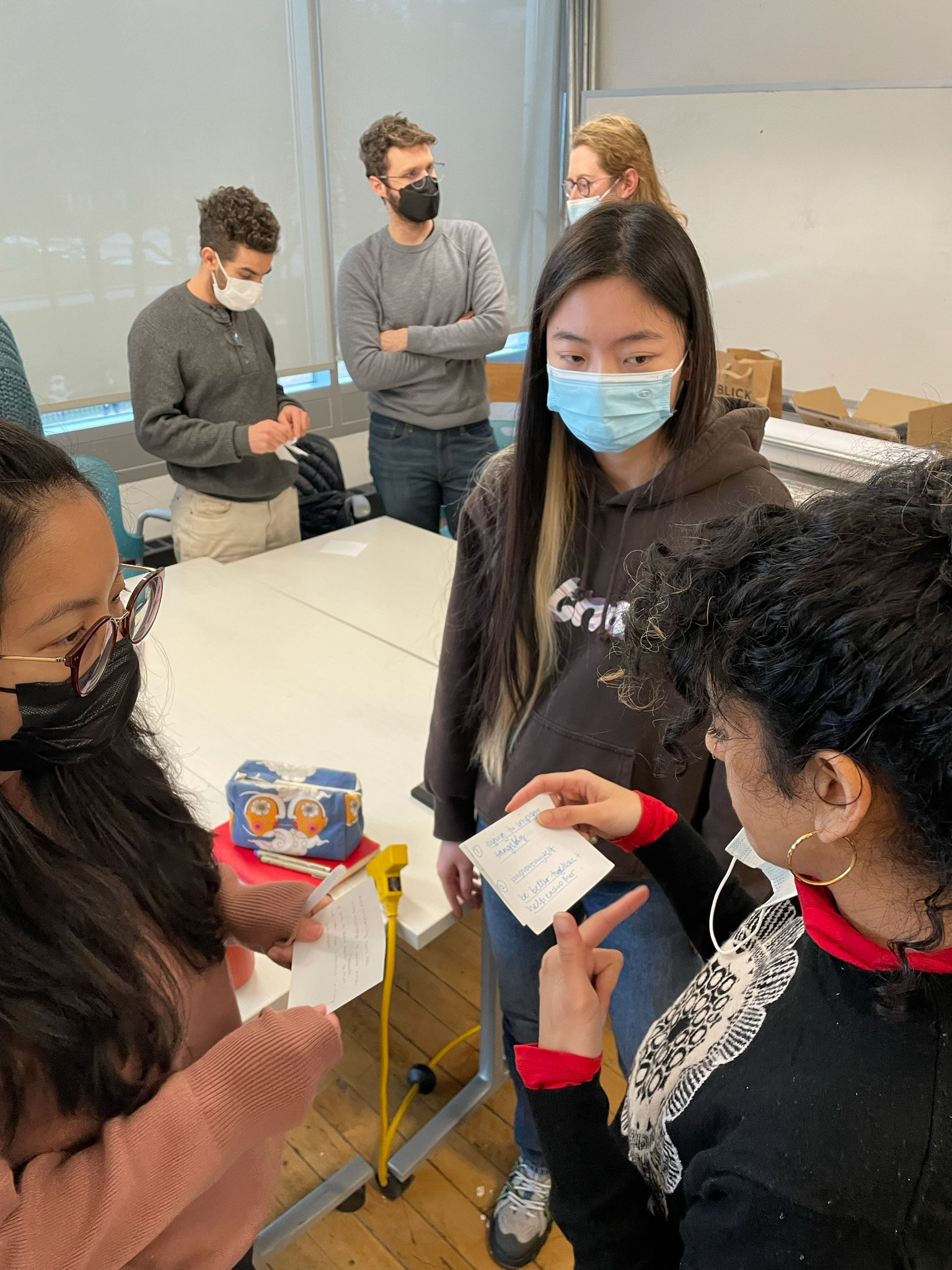

Facing the existential threat of climate change, it's no secret that both behaviors and systems at large need to shift. Although many people are aware of the struggling and changing world around us, there continues to be a lack of action to both make and enforce progressive changes. Due to social and economic challenges, lack of support from policy makers, life responsibilities or even distractions from everyday comforts and conveniences, prioritizing individual behavior change and collective conversation on how to make a lasting impact can get pushed to the side.
Another major issue we face as a society are sentiments of entitlement as humans and the incorrect notion that we can control the uncontrollable (i.e. nature). If collectively, we can acknowledge the flaw of human exceptionalism, we can start to address it by taking accountability for our actions and how these actions affect the world around us.
Group workshop on what accountability means while reflecting on both individual and collective responsibility.
If art is used to communicate such heavy concepts through public exhibitions, how can we use the visual and interactive systems that exist within daily life to also call attention to major issues while staying relatable, approachable and beautiful. As seen in the 2015 work, Ice Watch, by artists Olafur Eliasson and Minik Rosing, melting ice is a familiar tie to global warming and frequently used in the media to portray the severity of the crisis. When placed in an appropriate context, the imagery is effective at making an impactful statement in an experience that is shared collectively.
Ice Watch, 2014
Place du Panthéon, Paris, 2015
Photo: Martin Argyroglo
Place du Panthéon, Paris, 2015
Photo: Martin Argyroglo
Opportunity
Demonstration of a rug bringing people together in a once unoccupied space.
Rug donation courtesy of Natco Home.
How might we renew our awareness of the climate crisis in order to prioritize action as we both balance individual and collective responsibility with a sense of security and hope? Can intentional design elements help transform mundane objects into helpful reminders that we interact with throughout the day?
By placing an area rug in a location that wouldn't normally be occupied by group discussion, I was able to confirm the power of such an inviting, familiar, tactile and possibly comforting object. Where emptiness and wasted space once existed, a simple shag rug encouraged people to sit down together in an informal environment and provided and comfortable space for conversation. Could creating a rug design motifs that encourage climate conversation help to keep it in the forefront of the mind and not only inspire but empower groups to take action?
Design Outcome
In order to test the effectiveness of a climate-related rug design, I created a motif based on melting ice caps and printed it on a 6' x 9' piece of paper to mimic placing an area rug in a public space. Incorporating a visual element that might normally be upsetting into what would be an everyday interaction would help to "reclaim the narrative," encouraging those who walk on it to pause for reflection, interact with one another, and convert what might be a challenging, shared emotional reaction into feelings of empowerment (see "social grief" theory →).
What I discovered was that the rug design was too abstract to make a quick connection to the climate crisis. Once I gave test participants a prompt and explained the objective, the majority of people expressed interest in engaging in dialogue on the subject matter while interacting with the design. Out of 25 people, only 2 did not want to interact with the design once they realized it was about climate change, expressing that the topic was too stressful for them to address in the moment, leaving me curious as to whether these sentiments would change if it had been an actual rug with the associated levels of comfort tied to that particular object.
Next steps include, rug making for tactility and alternate design motifs for further testing!

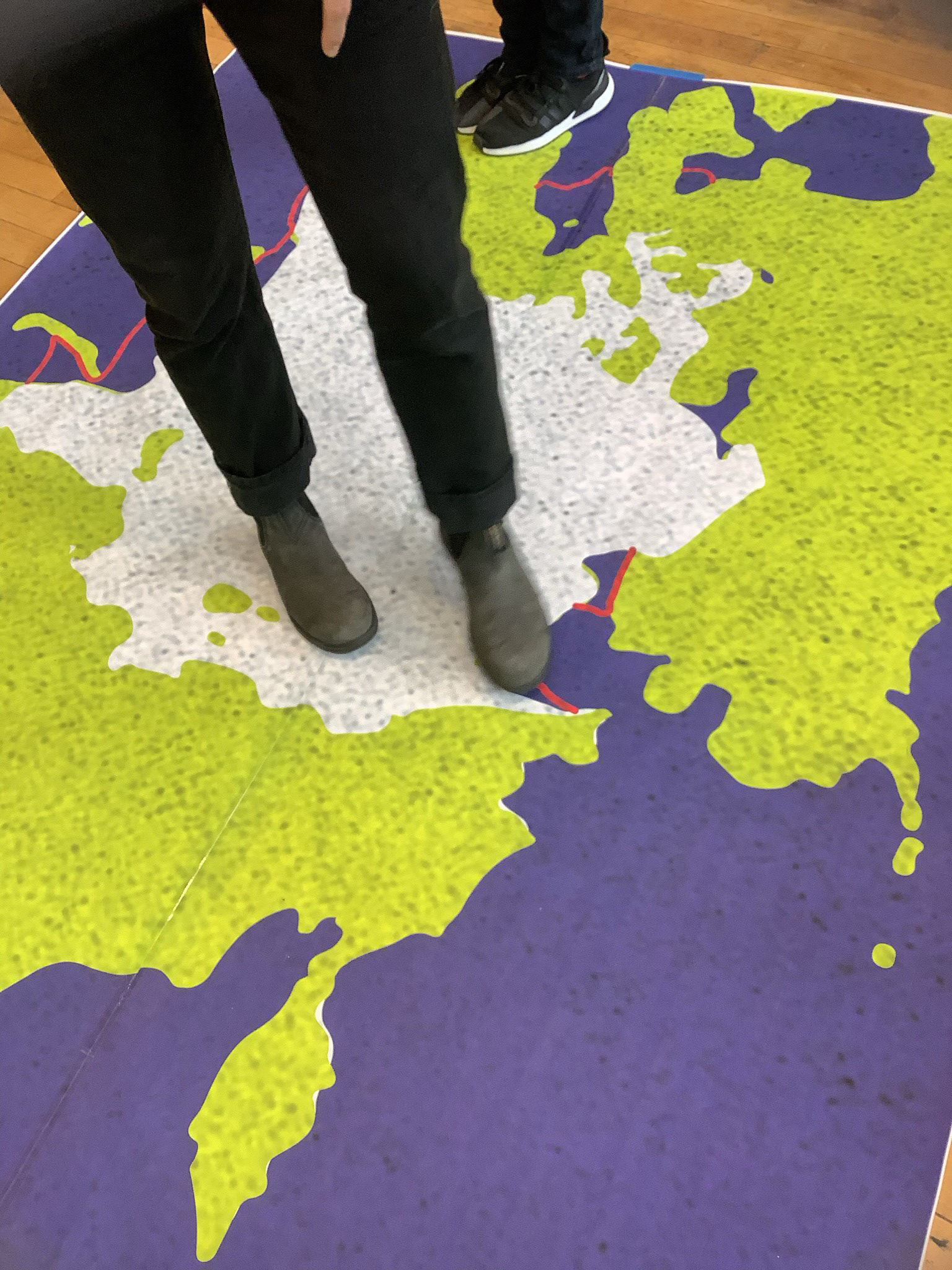


User testing of prompted interaction with printed rug prototype.
